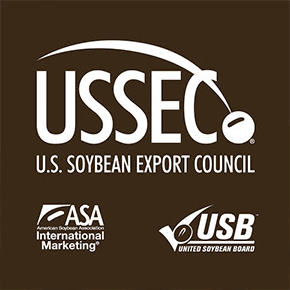U.S. SoybeanSustainability Initiatives
-
Maintaining the Ecosystem
In America, forests and wetlands where countless animals live are not turned into farmland for the sake of soybean production. With the main goal of protecting plants, wildlife, and the land, bugs that have a negative effect on the harvest such as aphids, locusts, or flies are left along with the animals that use them for food. This is all part of protecting a natural system where the soybeans can grow in a healthy environment. By growing crops in this way, it reduces the need for agricultural chemicals and can provide a safe and stable supply of soybeans.
Thanks to U.S. soybeans Approximately
0 hectares of wetlands have been restored. -
Thanks to U.S. soybeans Approximately
0 hectares of forests are now in existence.Protecting the Soil
The forests and wetlands surrounding farmland act as a buffer zone to prevent flooding as well as soil erosion or runoff. This protection preserves the health of farms and reduces the amount of agricultural chemicals and fertilizer that need to be used, while also reducing pathogens. Controlling the runoff and sedimentation from farmland improves the water quality, restoring the wetlands. In addition, through crop rotation and the planting of cover crops, the soil is kept healthy while the farmland is able to be protected while also being productive in a sustainable manner.
-
Improving the Working Environment of Farming
The U.S. Soybean Export Council follows all laws and regulations set by the U.S. government to ensure the safety and welfare of workers and to protect the safe agricultural businesses producing soybeans. This has allowed them to build a sustainable production system for U.S. soybeans. Ensuring a healthy and enjoyable lifestyle for all the people involved in soybean production is closely connected to providing a stable crop of safe, delicious soybeans.
Thanks to U.S. soybeans The working environment of over
0 soybean farms are protected. -
The energy used to produce soybeans has dropped by 0 % thanks to U.S. soybeans.
Developing Production Technologies
Continuously improving production methods and environmental conservation allows for more efficient and stable production. For example, by using the GPS system provided by satellites, it is possible to accurately control and manage the location and amounts of seeds planted and fertilizer spread over vast areas of farmland, reducing waste and streamlining work. Of course this saves work time, but it also reduces the amount of agricultural chemicals used, saves energy, and also increases crop production.
In order to more fully engage in sustainability initiatives, the U.S. Soybean Export Council has developed the Sustainability Assurance Protocol (SSAP).






